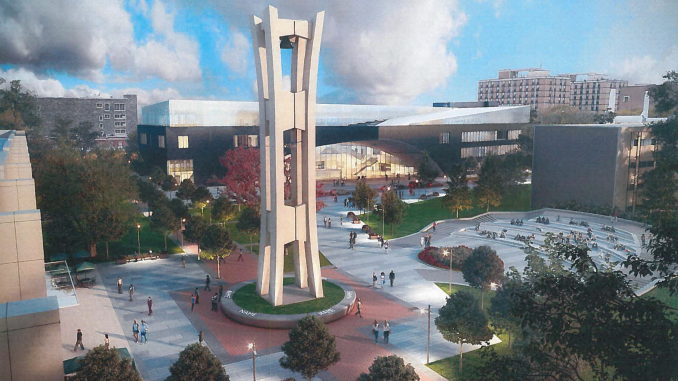
The Board of Trustees held its last meeting of the academic year on Tuesday and voted to move Temple University Japan Campus’ location and approved changes to the Bell Tower.
Temple University Japan Campus will leave its current buildings in Tokyo and move into a to-be-constructed building on the Showa Women’s University campus.
Moving to Showa will add amenities for student life in Tokyo and put Temple’s campus in a “busier” part of Tokyo, said university spokesman Ray Betzner.
TUJ’s campus sprawls three different office-style buildings toward the southern end of Tokyo. In the 20-year lease for $2.7 million a year at Showa, students will have easier access to the Sangenjaya subway station and consolidate into one building.
Showa’s location is near 13 other Japanese universities like the Japan University of Economics and Nihon University. Students will also be able to access amenities at Showa including its gym, libraries and cafeteria.
This will move Temple’s 35-year-old campus for the first time since its establishment in 1982. Temple has the longest-standing American university in Japan, Betzner added.
The base of the Bell Tower will be updated with a grassy ring and named after trustee and philanthropist H.F. Gerry Lenfest. The new “Lenfest Circle” will be completed by Fall 2017.
At the Bell Tower’s base, a ring of grass will be added around it and updated cement work as a part of the university’s Verdant Temple plan. The 100-foot tower will be cleaned and resealed from natural damages that have occurred since it was built in 1966, according to a university release.
Trustees also approved a $3 million project to replace the hot and cold water supply piping at Temple Towers. The current piping, which is nine years old, caused more than 55 problems just this academic year, Facilities Committee members said.
On the coldest day of this academic year, 300 cots were prepared in the Student Center to move students out of the residence hall because of the low temperatures in the building after piping failure, Betzner said.
President Richard Englert gave his President’s Report about Temple’s community engagement programs across the university.
Read more about Temple’s changing relationship with the community in Part 1 and Part 2 of the Temple News’ special project.
Dean Gregory Anderson also gave a Dean’s Report about the College of Education’s work in North Philadelphia schools to the Board.
“We need to continue to get the word out about our many contributions and services so people can take advantage of them,” Englert said during his remarks.
A copy of Temple’s Community Resource Guide for Winter 2017 was placed on all of the chairs in the public session. Englert touched on a few highlights within the guide, like Temple’s partnership with St. Christopher’s Foundation for Children for the Fresh Rx program that “prescribes” healthy meals to families in the North Philadelphia area.
He also said Temple University Hospital provided $74 million in care in the past year that went unreimbursed and $1.5 million in free care to community residents from the Kornberg School of Dentistry.
“The impact we are having on North Philadelphia is being noticed more widely,” Englert added.
Gillian McGoldrick can be reached at gillian.mcgoldrick@temple.edu or on Twitter @gill_mcgoldrick.


Be the first to comment